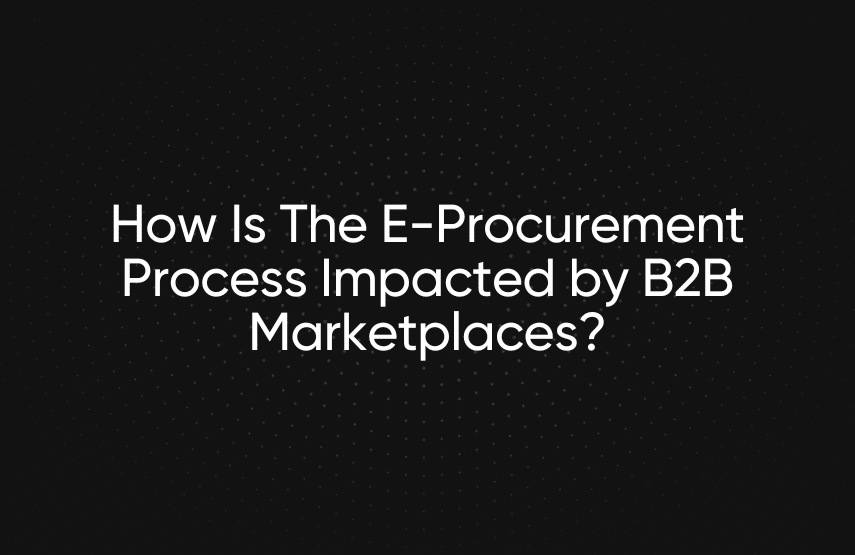How Is The E-Procurement Process Impacted by B2B Marketplaces?

E-procurement enables organizations to obtain the goods they need to run their business online. The typical e-procurement process involves some version of the following steps:
- Identifying the required items
- Clarifying the exact specifications
- Selecting a vendor
- Finalizing terms and price
- Generating a purchase order
- Delivery and inspection
- Invoicing and payment
The procurement cycle applies to both goods for distribution and internal consumption. Businesses aim to reduce the amount of effort required from members of the procurement team to streamline the process. How they do so depends on their resources.
Although e-procurement software is highly effective, it may not be accessible to all companies. In this post, we’ll examine how software improves the e-procurement process and why B2B marketplaces can have a similar effect.
[toc-embed headline=”E-procurement Software”]
E-procurement Software
E-procurement systems give you a centralized solution for managing procurement. They can improve the workflow of your internal processes by automating various tasks, such as initiating and approving purchase requisitions and orders. During setup, the system gives each user a permission level that determines what actions each can perform.
With a platform like Coupa, you can onboard all your suppliers into the procurement system. The suppliers then upload their product catalogs via API or electronic data exchange (EDI). It makes the procurement experience like an e-commerce journey. Employees making purchases can access the system and browse items from approved suppliers as if on a B2C site.
While a dedicated system can streamline the e-procurement process, the software license can be expensive. Enterprise organizations can afford the cost, but the license may not be a viable option for mid-market companies.
A report from Paramount WorkPlace estimates that 22% of companies do not use any e-procurement software. So, where do they go to procure their items digitally? Here is where B2B marketplaces and their growing popularity come into play.
[toc-embed headline=”E-procurement through B2B Marketplaces”]
E-procurement through B2B Marketplaces
B2B marketplaces provide buyers with a streamlined method of procurement. Using an API-driven architecture, marketplaces can run multi-vendor catalogs with complete and accurate product information. Pricing and promotions software allows for custom pricing based on the user. A personalization engine creates relevant product recommendations and a customized catalog.
With a B2B marketplace like Amazon Business, your procurement team has access to hundreds of millions of products in one place. The buying experience is ideal as you need to shop as you would for personal items. When companies can access suppliers in this manner, they no longer need e-procurement software.
Procurement through marketplaces does bring new challenges, however. You must vet suppliers to ensure they are legitimate and reliable. You’ll also need to review their service-level agreement (SLA) to establish clear expectations for transactions. Both of which can slow down the e-procurement process.
[toc-embed headline=”Conclusion”]
Conclusion
While many mid-market users find B2B marketplaces appealing, they expect the e-procurement software market to grow steadily. In the future, look for solutions to take a more modular approach to their functionality. Doing so will improve flexibility as well as enable procurement functions to be added directly to e-commerce systems.

Product management @ fabric. Previously b2b e-commerce @ Shipwire, Fiserv, Zong, and Google.